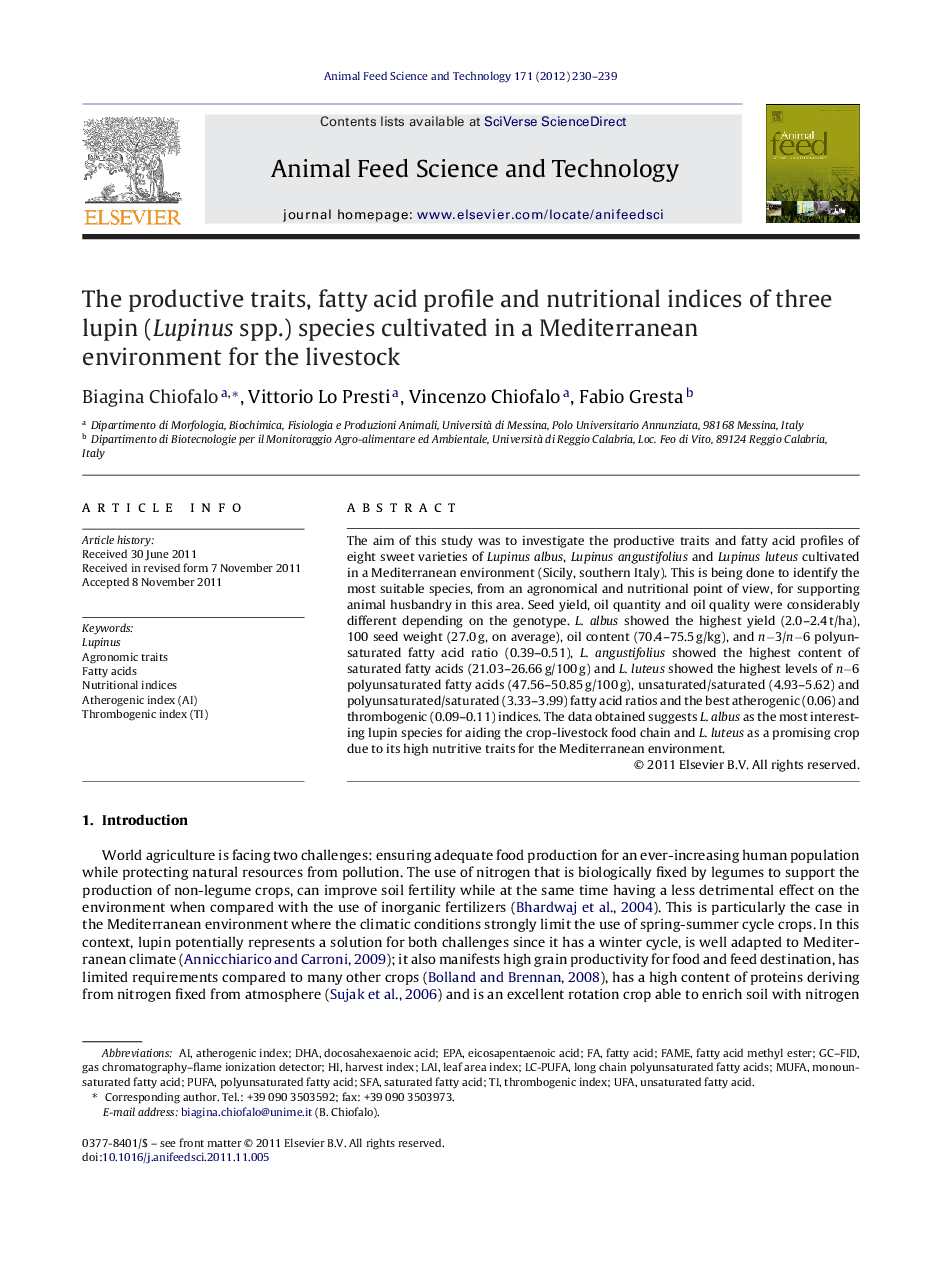| Article ID | Journal | Published Year | Pages | File Type |
|---|---|---|---|---|
| 8492214 | Animal Feed Science and Technology | 2012 | 10 Pages |
Abstract
The aim of this study was to investigate the productive traits and fatty acid profiles of eight sweet varieties of Lupinus albus, Lupinus angustifolius and Lupinus luteus cultivated in a Mediterranean environment (Sicily, southern Italy). This is being done to identify the most suitable species, from an agronomical and nutritional point of view, for supporting animal husbandry in this area. Seed yield, oil quantity and oil quality were considerably different depending on the genotype. L. albus showed the highest yield (2.0-2.4Â t/ha), 100 seed weight (27.0Â g, on average), oil content (70.4-75.5Â g/kg), and nâ3/nâ6 polyunsaturated fatty acid ratio (0.39-0.51), L. angustifolius showed the highest content of saturated fatty acids (21.03-26.66Â g/100Â g) and L. luteus showed the highest levels of nâ6 polyunsaturated fatty acids (47.56-50.85Â g/100Â g), unsaturated/saturated (4.93-5.62) and polyunsaturated/saturated (3.33-3.99) fatty acid ratios and the best atherogenic (0.06) and thrombogenic (0.09-0.11) indices. The data obtained suggests L. albus as the most interesting lupin species for aiding the crop-livestock food chain and L. luteus as a promising crop due to its high nutritive traits for the Mediterranean environment.
Keywords
EPAThrombogenic indexUFALC-PUFASFAMUFAGC–FIDGas chromatography–flame ionization detectorEicosapentaenoic aciddocosahexaenoic acidFatty acidsaturated fatty acidPolyunsaturated fatty acidunsaturated fatty acidmonounsaturated fatty acidPUFAFatty acidsLong chain polyunsaturated fatty acidsDHAatherogenic indexHarvest indexLeaf area indexNutritional indicesLAIAgronomic traitsLupinusFatty acid methyl esterFAME یا fatty acid methyl esters
Related Topics
Life Sciences
Agricultural and Biological Sciences
Animal Science and Zoology
Authors
Biagina Chiofalo, Vittorio Lo Presti, Vincenzo Chiofalo, Fabio Gresta,
